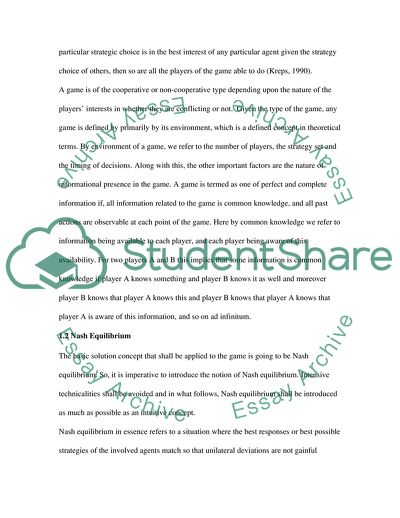Cite this document
(A Game Theoretic Exploration of a Consumers Decision Making in the Report Example | Topics and Well Written Essays - 1500 words, n.d.)
A Game Theoretic Exploration of a Consumers Decision Making in the Report Example | Topics and Well Written Essays - 1500 words. https://studentshare.org/macro-microeconomics/1715050-game-theory-managerial-economics
A Game Theoretic Exploration of a Consumers Decision Making in the Report Example | Topics and Well Written Essays - 1500 words. https://studentshare.org/macro-microeconomics/1715050-game-theory-managerial-economics
(A Game Theoretic Exploration of a Consumers Decision Making in the Report Example | Topics and Well Written Essays - 1500 Words)
A Game Theoretic Exploration of a Consumers Decision Making in the Report Example | Topics and Well Written Essays - 1500 Words. https://studentshare.org/macro-microeconomics/1715050-game-theory-managerial-economics.
A Game Theoretic Exploration of a Consumers Decision Making in the Report Example | Topics and Well Written Essays - 1500 Words. https://studentshare.org/macro-microeconomics/1715050-game-theory-managerial-economics.
“A Game Theoretic Exploration of a Consumers Decision Making in the Report Example | Topics and Well Written Essays - 1500 Words”. https://studentshare.org/macro-microeconomics/1715050-game-theory-managerial-economics.


